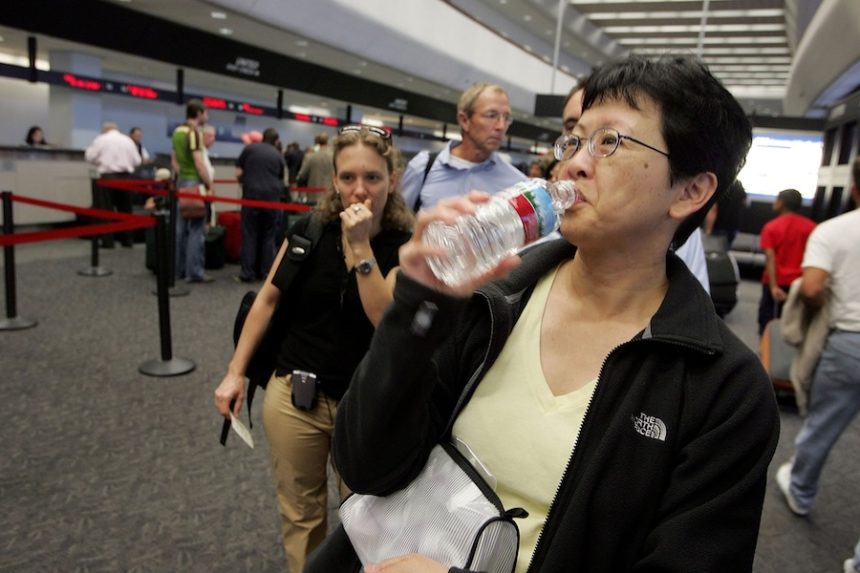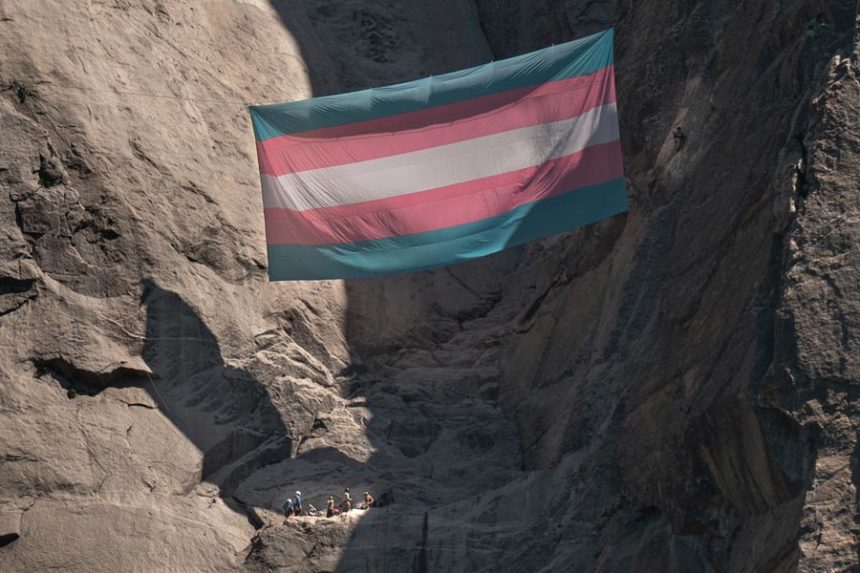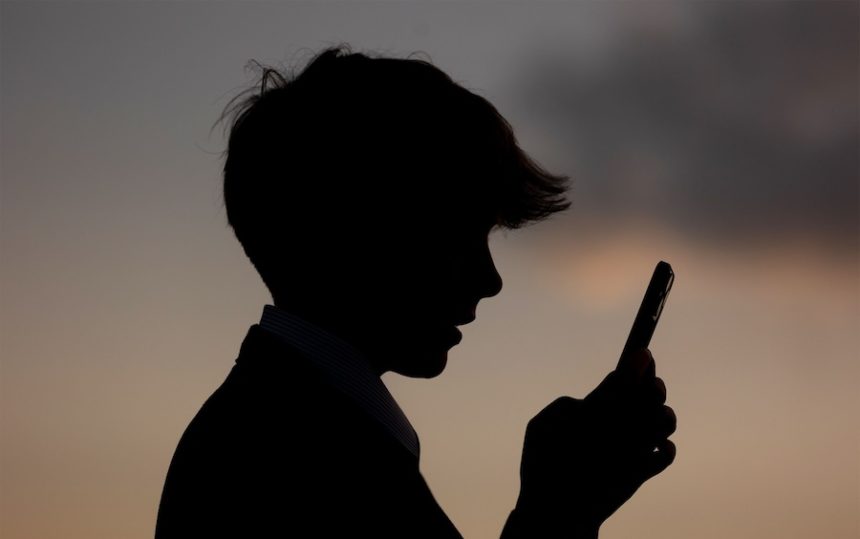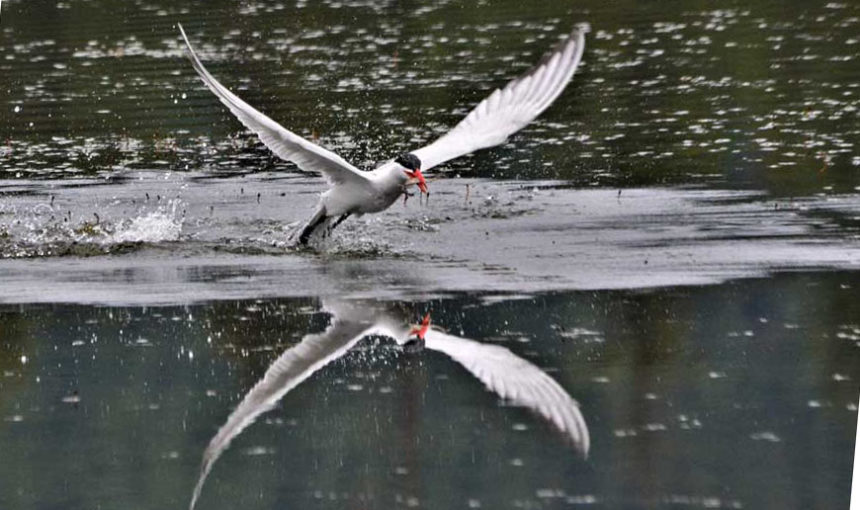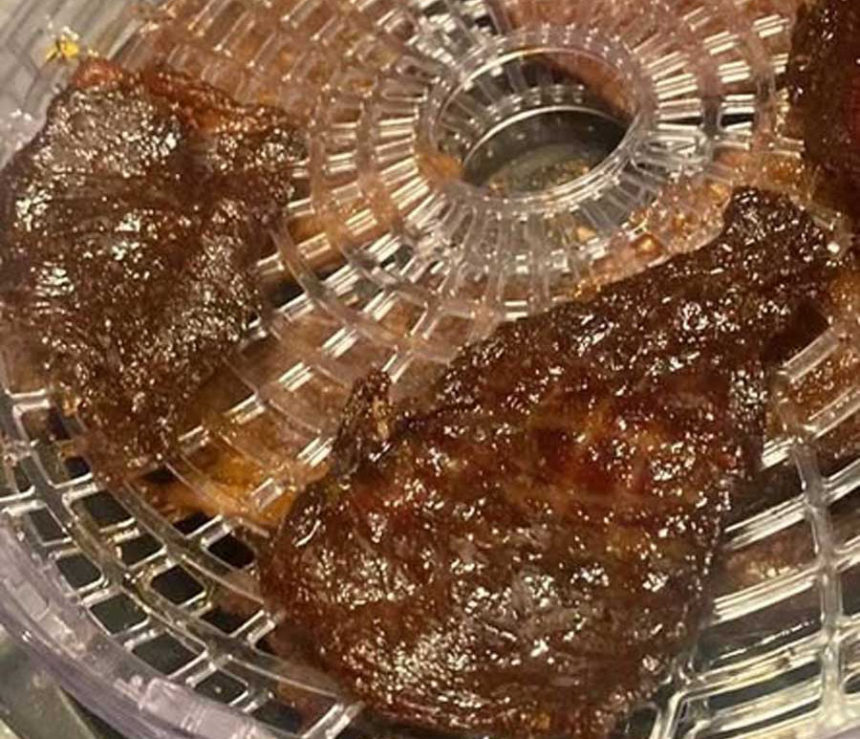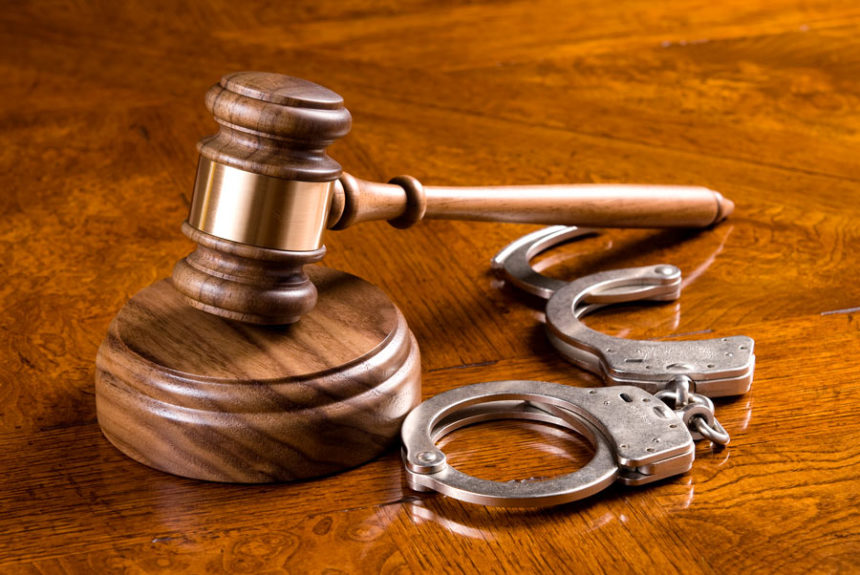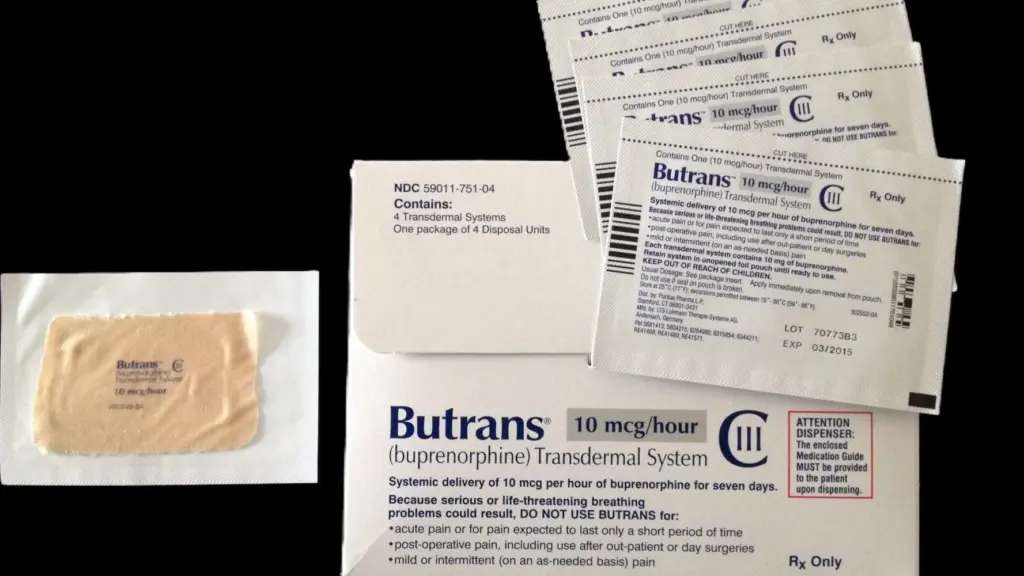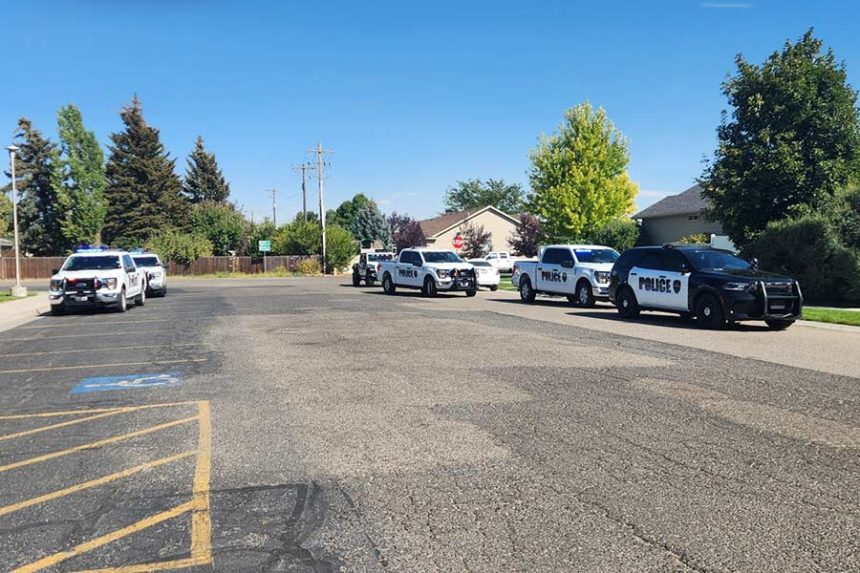(CNN) As millions of Americans fly in what is expected to be another hot summer, some will probably be looking for simple travel tips to make their trips a bit less unpleasant.
How to get a full bottle of water through a US airport security checkpoint is one of the several flying tips that have been popular on TikTok in recent years.
The simple solution is to freeze it first.
No, there would be no regulations for you to breach. In fact, the US Transportation Security Administration (TSA) supports this.
A TSA representative emailed CNN to confirm that frozen liquid products are permitted to pass through the checkpoint as long as they are frozen solid when they are brought in for inspection.
In reference to the TSA regulation that permits each traveler to bring liquids, gels, and aerosols in containers that are less than 3.4 ounces or 100 milliliters and that can all fit into a single quart-sized bag, they added that frozen liquid items must comply with 3-1-1 liquids requirements if they are partially melted, slushy, or contain any liquid at the bottom of the container.
If your frozen bottle begins to melt, what should you do? Before placing your belongings in the security bin, have a drink.
The 3-1-1 rule does, of course, have certain exceptions. The TSA permits greater quantities of medically required liquids, gels, and aerosols in carry-on bags, provided that they are declared to security checkpoint agents for examination. Do you have a goldfish as a pet? It seems that’s permitted as well.
The best course of action is to avoid bringing any meals or frozen liquids that you would be sad to discard in your carry-on luggage.
According to the TSA website, the TSA officer has the last say over whether an item is permitted to pass through the checkpoint.
What’s the point?
It should come as no surprise that some passengers find the idea of taking cold bottles past security unsettling.
Since you can just bring an empty bottle through security and fill it up for free at the readily available water fountains most airports now have in departure halls, many people who left comments on well-known TikTok videos and blogs about the hack claimed they didn’t see the point.
Others couldn’t comprehend why, despite the exorbitant costs, someone would go to such lengths to avoid paying for a bottle of water on the other side. Some even noted that if a passenger is on a short flight, the ice may melt too slowly for them to even have time to drink it.
Although the TSA has regularly reminded people about this vulnerability on its social media channels, some travelers were surprised that it wasn’t widely known.
Among the regular travelers who think the concept has potential is aviation writer John E. DiScala, sometimes known as Johnny Jet, who has visited more than 100 countries and logged over 100,000 miles year since 1995.
“There are times when this travel hack makes sense, even though I’ve never personally brought a frozen water bottle through security,” he told CNN in 2024.
Yes, you may always, like I always do, fill your bottle up after security. However, occasionally there are huge lines, no refilling stations are available, or you just don’t have enough time to do it before boarding. It would be convenient to have your ice-cold water on hand in these situations.
Additionally, he cited the airline problems from the previous summer as justification for putting a bottle in the freezer prior to your travel.
Refilling station water is nice, but nothing beats ice-cold water in intense heat, DiScala remarked.
There were numerous accounts of travelers who were stranded on delayed planes, sitting on the runway, and I’m sure they wished they had access to cold water to stay hydrated.
Being ready is always a good idea.
DiScala acknowledged that the excitement of outwitting the officer might be a contributing factor in some tourists’ motivation to get frozen bottles through US airport security checkpoints, but emphasized that this tactic could be rather useful.
Although people enjoy travel tips that give them the impression that they are getting around the system, such as packing more clothing than they could fit in a carry-on luggage inside a travel pillow, this one is not only simple and affordable, but it may also help you stay safe, hydrated, and healthy, he said.
It’s wise to be ready and bring your own water because I never want to be dependent on the flight attendants for it.
Before going to the bother of freezing their water bottles, travelers from countries other than the US should find out what the policies are in the country they are leaving. For example, Canada isn’t quite as laid back.
On its website, the Canadian Air Transport Security Authority (CATSA) states that, with limited exclusions, gel and ice packs are subject to 100 ml liquid restrictions, just like non-solid items. However, it makes no mention of frozen water bottles.
According to a CATSA online article, frozen drinks, like ice, are allowed in amounts of 100 ml (3.4 oz) or less.
Food that is typically a liquid or gel but has been frozen solid and weighs more than 100 milliliters will not be permitted to pass through security in your carry-on. A food must be solid at room temperature in order to qualify as such.
Why do the hacks make us go?
It should come as no surprise that the frozen water bottle trick became well-known on TikTok. The app highlights different patterns and offers a wealth of ideas and methods to help flyers.
Some may be useful, but others can make people angry.
Consider the aesthetic trend of last year’s airport trays, where users posted creatively organized photos of their reading materials, shoes, eyeglasses, and toiletries inside the legally required polypropylene containers.
The posts received unfavorable responses, with some remarking that the airport security line is not the appropriate location for a photo shoot, despite the fact that many others were merely uploading pictures of trays they had set up at home.
Additionally, some passengers seem to wish to exacerbate the already stressful experience of flying. Enter airport theory, a TikTok fad that asserts that, if passengers check in online and only bring carry-on luggage, they should be able to get to the airport as little as fifteen minutes before their aircraft boards.
Meanwhile, the honor for the most horribly named flying fad that travelers are gloating about online goes to . raw dogging. Passengers have been sharing their own stories of their mental prowess for this one, saying they had no entertainment at all during the flight—no music, movies, or literature.
However, not every post that goes viral is innocuous. For example, experts have voiced their concerns about a purported flying hack that is circulating on Instagram and TikTok and claims to improve sleep for pilots.
Passengers can be seen resting their feet to the edge of their seats and pulling their knees up to their chest in the videos, which have received millions of views. They then rest their heads on their knees after fastening their seatbelts around their ankles to keep their feet from falling off the seat.
It should come as no surprise that US flight attendants oppose passengers trying this one.
Sara Nelson, president of the Association of Flight Attendants-CWA, which represents 55,000 flight attendants at 20 airlines, told CNN Travel earlier this year that this is very risky.
The seatbelt should fit snugly and low across your lap. In the case of turbulence, an emergency landing, or an accident, this will best protect you. This is not just for your own protection; if you are not securely fastened, you could injure someone else if you are flung into turbulence.
